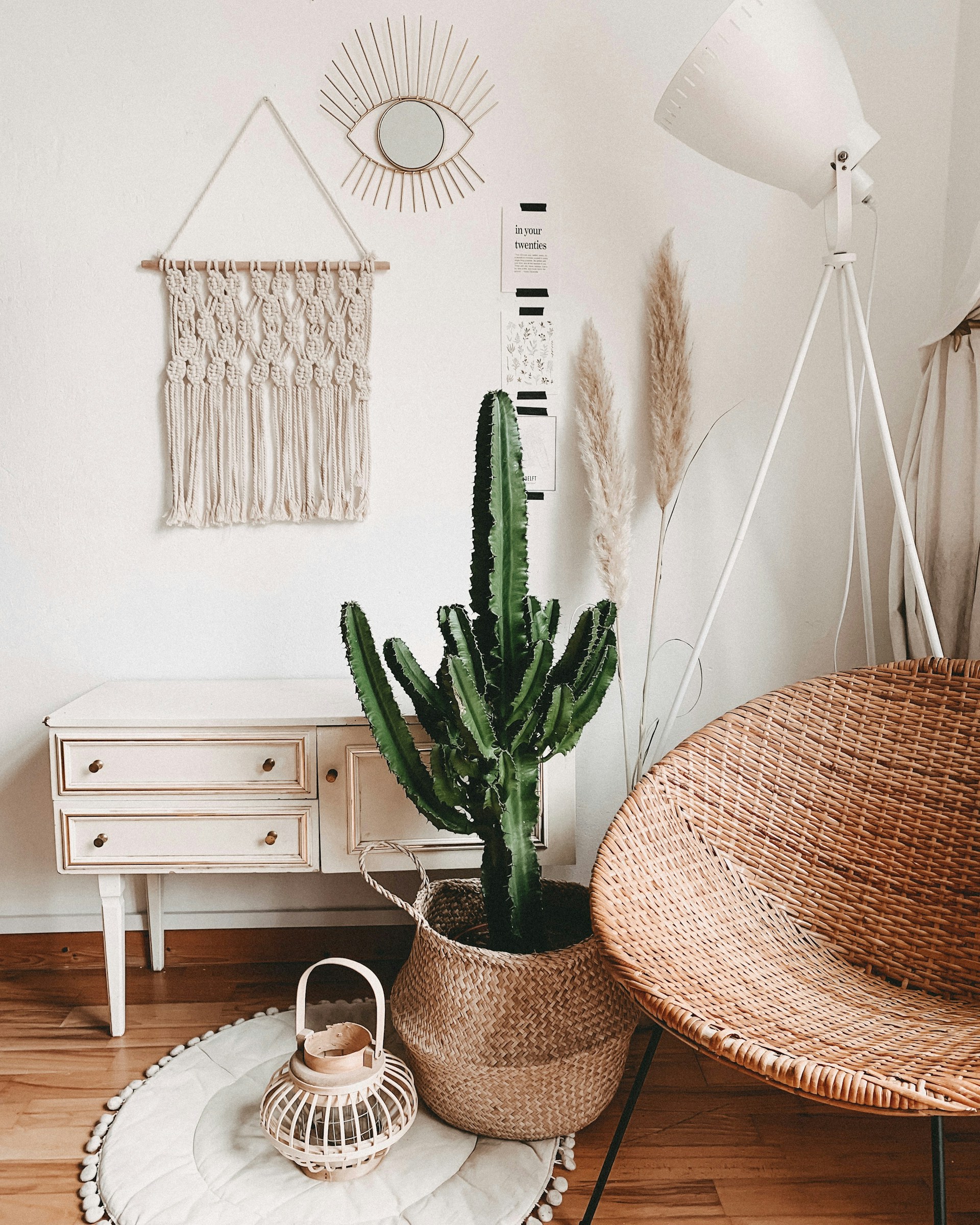Before the read
Thoughtfully designed spaces using color, light, and layout choices can reduce stress, boost focus, and support emotional wellness.
Mindful interior design blends aesthetics with intention, focusing on mental clarity, natural materials, and emotional balance.
Natural textures, warm lighting, and soothing color palettes work together to foster a more relaxed and mindful living space.
Creating Mindful Spaces That Positively Influence Mood, Boost Productivity, and Enhance Life Quality
“Life is a gift…Live like it.” The values propagated by ANDRU Living, a popular interior design brand, suggest that we should all pay more attention to the quality of life we create through our management of space and design choices, which emphasizes the necessity of mindfulness and mental health practices in interior design.
Have you ever walked into a room and instantly felt at ease? Maybe you’ve entered a space that made you feel tense and didn’t know why. The way our surroundings are designed has a profound impact on our mental and emotional well-being. From the colors on the walls to the materials underfoot, every design choice shapes our mood, energy, and overall health.
In this article, we’ll explore mindful interior design, a wellness-driven approach that blends aesthetics with psychology. We break down the essential elements—natural materials, light, color, and spatial layout—that contribute to a balanced and calming environment. We also explore how environmental factors like air quality, lighting, and acoustics may influence our mental state. By the end, you’ll have practical tips for transforming your own space into a sanctuary of well-being.

How Your Space Affects Your Mind
Before we get into the details, let’s discuss why interior design matters for mental health. Our brains are wired to respond to our surroundings. Studies have shown that cluttered, poorly lit, or noisy environments can increase stress levels, while well-designed spaces can enhance relaxation, focus, and even happiness. Hence, the popular saying, “A cluttered desk is a cluttered mind.”
This connection between psychology and design is the foundation of wellness-focused interior design approaches. When we mindfully craft our spaces, we can reduce anxiety, improve sleep, and boost productivity—all through thoughtful design choices. Let’s explore how.
The Healing Power of Natural Materials
Imagine running your fingers over a wooden table or stepping onto a stone floor. These sensations feel grounding, don’t they? Natural materials—like wood, stone, clay, and linen—bring a sense of calm and connection to nature. This idea, known as biophilic design, taps into our innate preference for natural elements.
Light: The Unsung Hero of Wellness Design
Lighting isn’t just about visibility—it has a huge impact on mood, sleep, and focus. Natural light influences the human body’s circadian rhythms. Poor lighting can lead to headaches, fatigue, and even depression, while well-planned lighting can enhance alertness during the day and relaxation in the evening.
Evoking Emotion in Design Using Color
Color isn’t just about aesthetics. It deeply influences our emotions and behavior. Think about how you feel in a soft blue room versus a bright red one. Color psychology plays a crucial role in interior design, helping us cultivate serenity, energy, and focus, depending on our needs.
The Psychology of Space and Other Environmental Factors (Air, Sound, Sensory Balance) in Interior Design
Have you ever noticed that some rooms feel open and inviting while others feel cramped and stressful? The way furniture is arranged—and how much space is left open—can also affect our sense of comfort and relaxation. Beyond visuals, our senses play a huge role in how we experience a space. The air we breathe, the sounds we hear, and the overall sensory experience of a room can significantly affect our mental health.

Wellness-Oriented Interiors: Real-World Inspiration
To see mindful design in action, look at Scandinavian interiors—clean, simple, yet warm spaces that balance minimalism with coziness. Similarly, Japanese Zen-inspired homes emphasize natural materials, neutral colors, and open spaces to foster tranquility.
One inspiring example is ANDRU Living, a mindfulness-enthused brand that specializes in merging interior design with wellness practices. With the belief that every space has the potential to inspire, comfort, and reflect the essence of those who inhabit it, ANDRU Living is passionate about modifying and creating living environments that redefine the way people connect with their sanctuary.

Their keen eye for design, commitment to quality, and passion for wellness are the perfect combination for a balanced, fully immersive restorative experience.
Creating Your Own Mindful Space
At its core, mindful interior design is about intention. It’s about choosing elements that nourish well-being, whether through natural textures, soft lighting, or thoughtfully arranged spaces.
How to Use Natural Materials for Well-Being:
Wood: Use wooden furniture, flooring, or wall accents to create warmth and comfort. Studies show that wooden interiors reduce stress and create a welcoming atmosphere.
Stone & Clay: For an earthy, grounding effect, incorporate stone countertops, clay vases, or textured walls.
Natural Fabrics: Opt for linen or cotton upholstery, curtains, and bedding to promote breathability and softness.
The key here is tactility. Touching natural textures activates a deeper sensory connection, fostering relaxation and mindfulness.
How to Optimize Lighting for Mental Clarity:
Maximize Natural Light: Keep windows unobstructed, use sheer curtains, and add mirrors to reflect sunlight. Exposure to daylight increases serotonin levels, improving mood and energy.
Layer Your Lighting: To create a balanced atmosphere, use a mix of ambient (soft, overall lighting), task (focused lighting for reading or work), and accent (decorative lighting) lighting.
Use Warm-Toned Bulbs in the Evening: Cool, blue-toned lights can disrupt sleep, so opt for warm, dimmable bulbs in bedrooms and relaxation spaces.
When used thoughtfully, light creates harmony between our environment and our body’s natural rhythms, leading to a more mindful, restful home.
Choosing Colors for Emotional Balance:
Calm & Relaxation: Soft blues, greens, and earth tones evoke tranquility, making them ideal for bedrooms and meditation areas.
Energy & Creativity: Yellows and oranges stimulate positivity and mental clarity, great for workspaces or creative studios.
Grounding & Warmth: Neutrals and warm shades like beige, terracotta, and muted browns create a cozy, stable environment.
When selecting colors, consider both personal preference and the psychological effects they might have on your daily mood.
How to Create a Mindful Layout:
Declutter & Simplify: Clutter overwhelms the mind. Keep only meaningful items out and ensure everything has a designated place.
Allow for Open Space: Even in small rooms, maintaining open pathways and avoiding overcrowded furniture arrangements makes a space feel more expansive and breathable.

Designate Restorative Zones: Create cozy nooks for reading, meditation, or quiet reflection to encourage mindfulness and relaxation.
Mindful spatial planning isn’t about having a large home, it’s about making the most of the space you have in a way that promotes ease and movement.
Enhancing Air Quality and Sensory Comfort:
Air Quality: Keep indoor plants (like peace lilies or snake plants) to purify the air. Use essential oil diffusers, such as lavender or eucalyptus, for calming scents.
Soundscaping: To reduce stress-inducing noise pollution, introduce soft background sounds—gentle water fountains, nature-inspired sound machines, or even just good noise insulation.
Sensory Balance: Incorporate a mix of textures—smooth, rough, soft—to create a more engaging, comforting space.
These seemingly small environmental adjustments can have a profound impact on reducing stress and promoting well-being.

Mindful Interiors: DIY
Your Next Steps:
- Identify one area in your home that feels stressful or chaotic.
- Experiment with one small change—maybe introduce a calming color, add natural textures, or optimize lighting.
- Notice how it makes you feel. Does it bring a sense of ease or clarity?
Mindful design isn’t about perfection—it’s about creating a space that supports your mental and emotional health every day.
So, what’s one mindful design change you’d like to make in your space?
More by this author
The Wrap
- Mindful interior design connects wellness and space, using intentional choices to support emotional, mental, and even physical well-being.
- Natural materials like wood, stone, and linen are key to creating grounding environments through tactile connection.
- Lighting profoundly affects mood and clarity—maximize natural light by using sheer curtains and mirrors, and layer lighting for flexibility.
- Color psychology plays a vital role: calming hues (like soft blues or greens), energizing shades (like yellows), and grounding neutrals each serve unique purposes.
- Effective layout boosts mental clarity—clear clutter, keep pathways open, and create zones for rest or reflection to support daily mindfulness.
- Effective layout boosts mental clarity—clear clutter, keep pathways open, and create zones for rest or reflection to support daily mindfulness.
- Start small and stay intentional—even minor mindful changes can have a major impact on how your home makes you feel.































